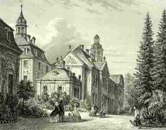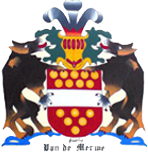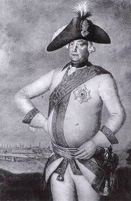History
Overview
The castle „Schloss Biendorf” is located in the historical village of Biendorf (in the federal state of Saxony-Anhalt, Germany). Like most other castles in Europe, it has a rich history. The castle was originally located in the centre of the village. The current building is a redevelopment of the original castle from 1927. In the north of the castle there was a strictly structured garden, in baroque style, of which today only the wall and the sandstone entrance is still existing. These elements are of course now landmarked.
Please see below for a brief overview of the history of Schloss Biendorf.
 Construction
Construction
The village of “Biendorf” was documented for the first time in 974. First documented references about the development of an asset on this parcel are going back to 1488. Free studs were erected next to the asset later on. At the time of the ownership of the castle by Sigmund von Hagen in 1623, at that time only a rural court which has become tumbled-down in the meantime, was renovated completely and the adjoining buildings have been rebuilt.
In the 18th century
From 1759 until 1784 (the era of late Baroque) – at the time Prince Carl Georg Leberecht of Anhalt-Köthen (1730-1789; picture) acquired the asset – the
status was lifted from rural court to castle. The castle has been developed from the former rural court of Busso von Hagen, lord of the manor of Biendorf. The redevelopment was of course accompanied by extensive rebuilding activities. After the death of the prince, the castle served as a widow residence until 1812.
In the 19th century
In 1846, Biendorf was connected to the federal railway system, which would lead to a new function of the castle. From this year on, the park and the castle served as a recreation area for citizens from Köthen and Bernburg, who were able to reach the castle quickly by train.
In the 20th century
In 1918/1919, in the winter after World War I, the castle was acquired by landlord Lampe in the context of a redundancy payment. Unfortunately, a terrible fire burned down the castle and nearly destroyed the whole building. Only the gate lodge (from the beginning of the 18th century) and the orangery (built 1760-1763) remained. Then-owner Lampe took care of the rebuilding. The English garden originates from this era too. In 1927, the castle came into public hands and was administered by public trustees. From 1934 the assets served as the very first school for peasant women in Germany. After World War II, the asset served as technical school for agriculture from 1949 until 1992, as well as a advanced training institute for agricultural professions. In 1992 it was renamed into “Fachschule für Agrar- und Hauswirtschaft” (Technical School for Agriculture and Housekeeping). Until the dismissal of lecture in 2004, several trainings were organized: Apprenticeship, instructor qualifying examinations, weekend courses, special courses and as a place for agriculturural political events.
Today
Schloss Biendorf is the private property of the Van de Merwe family since 2005.
Sources
URL:
http://www-proj.loel.hs-anhalt.de/stadtrundgang/region.htm (10.2.2007)
http://www.burgen-in-sachsenanhalt.de/Publikationen/publikationen.html


